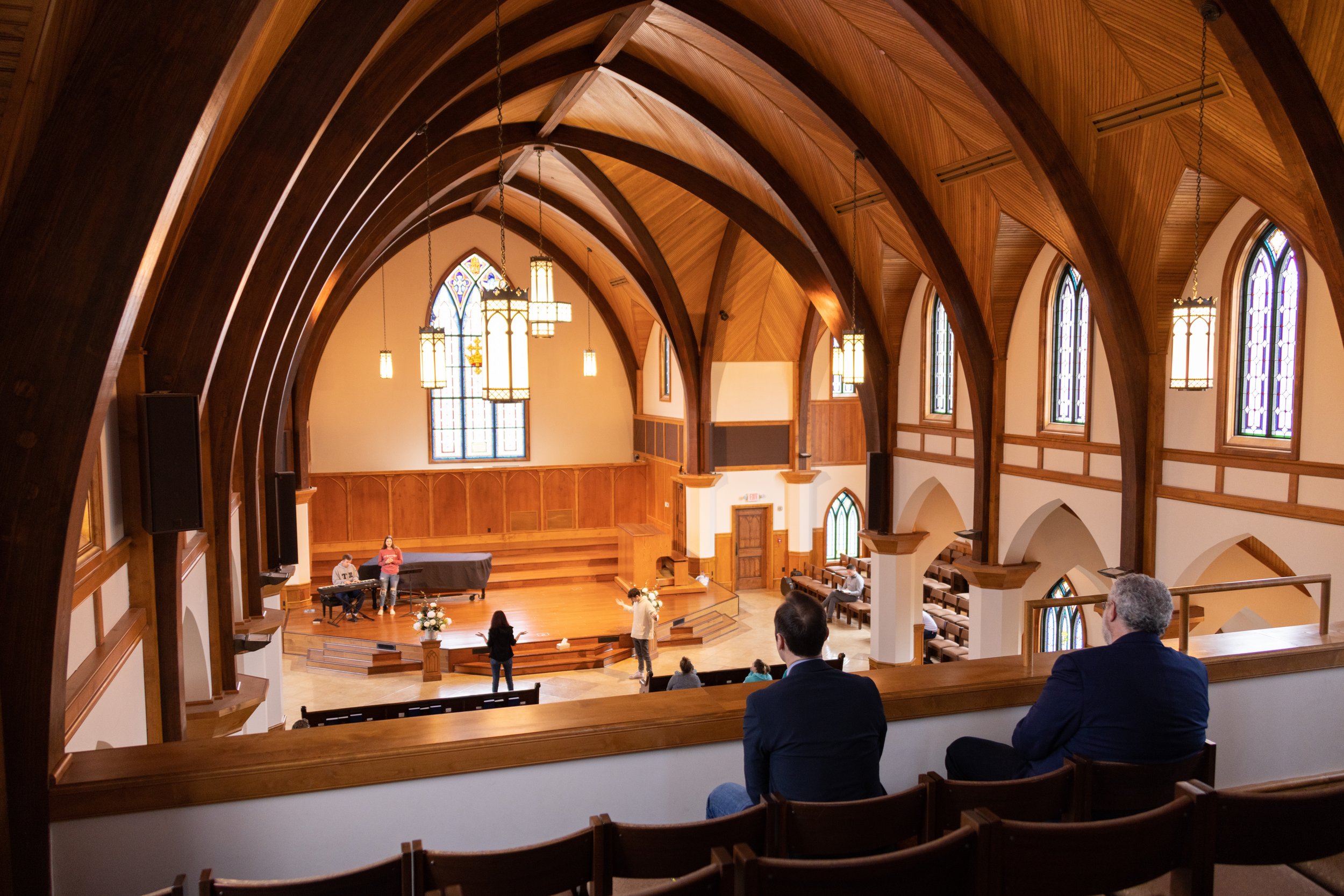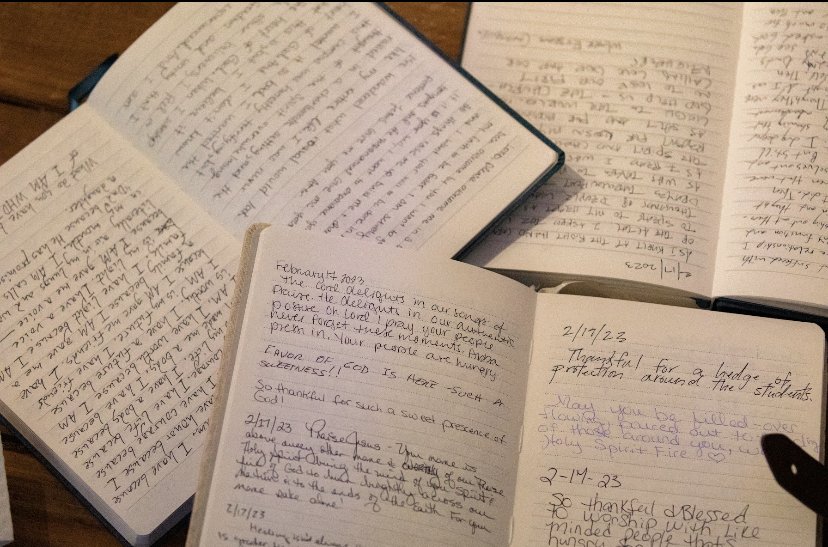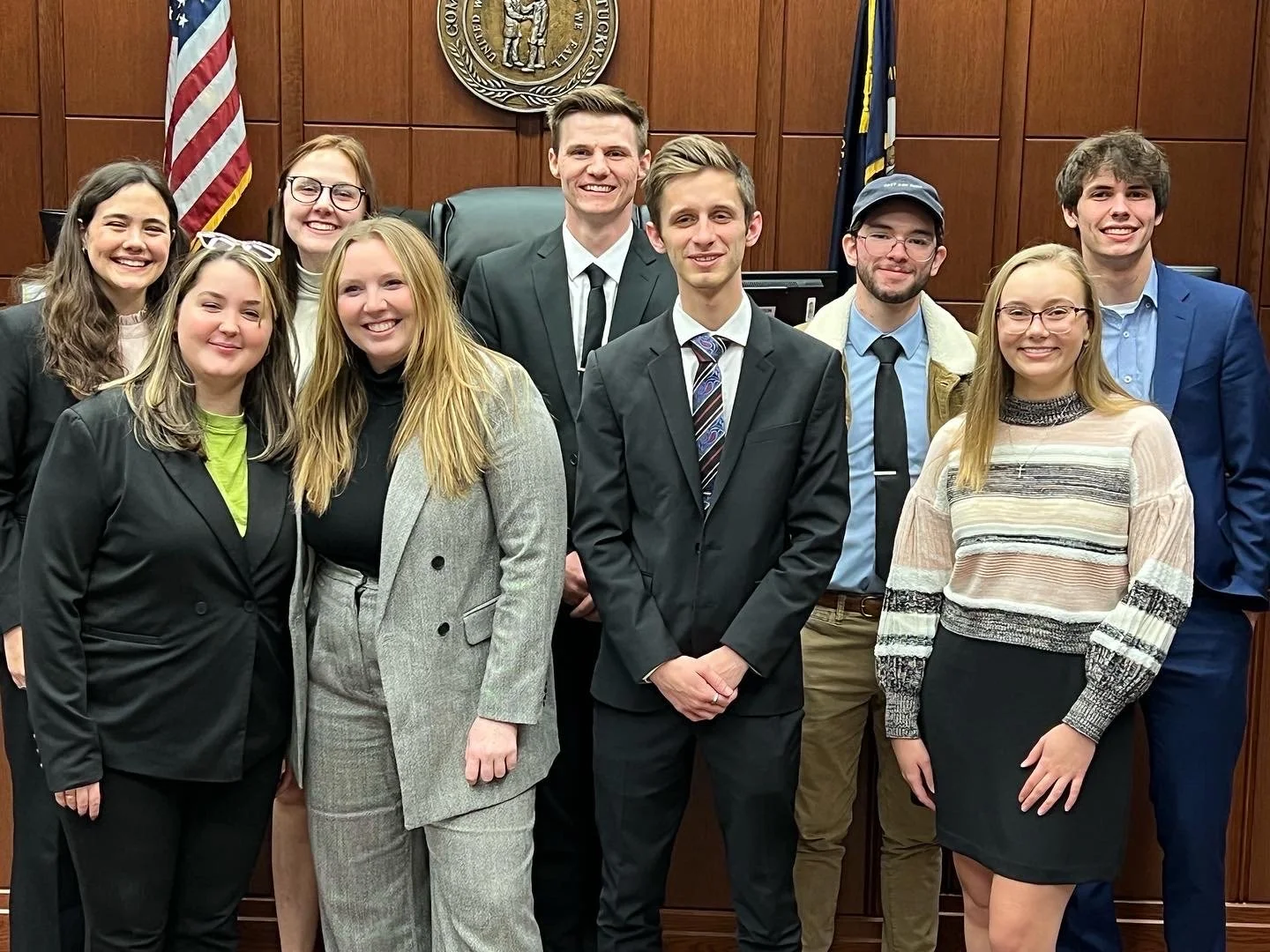Reflections on the 126 hour Prayer Vigil
After over 50 years, Lee’s campus welcomed a community wide Prayer Vigil led by students and faculty. On Monday Feb. 13, students from Dr. Kevin Nordby’s Post Modernism class entered the Stone Chapel during their class time to join together in prayer. For the next 126 hours, students, faculty, staff, and community members gathered together in prayer, worship, and testimonies of faith.
Students, Faculty, and members gathering in the Stone Chapel for prayer
Photo: Riley Evans, Senior Photographer
The idea to pray over Lee University at the Stone Chapel arose from a proposed question Nordby always asked his students when they return to class on Monday, which was “Did anyone have any epic weekend stories?”
From there, Alyson Donnally, a student in the class, spoke about her experience at the revival taking place at Asbury University, spanning two weeks time and receiving national attention. Donnally spent the weekend interceding through prayer for revival, not just at Lee University, but the world. During her experience, she said she felt radical peace, repentance, and unity. “Talking about revival creates a hunger for revival in others,” Donnally said in regards to her experience at Asbury. This sparked conversation about what a ‘revival’ at Lee would look like, and Nordby felt led to offer the class time as a time to go to the Stone Chapel and pray.
After taking a vote, the class had unanimously decided they were using the class period to pray.
The class began to commune together on the stage inside the empty chapel and shared things Nordby said they “needed to share with God and with others.” Nordby highlighted that the connection he gained with his students was remarkable, and he felt the experience created a ‘safe space’ amongst his class.
“Before I knew it, I was there for seven hours,” Nordby said.
One of his students in the class, Jessica White, described her experience saying there was “a want to be where the spirit of God was.” Nordby and White found themselves having to leave during the day and were worried that they may miss out on the vigil. To their surprise, the vigil had continued on into the night.
“I was so grateful and excited to be shoulder-to-shoulder with students and co-workers to have a deeper connection,” Nordby remarked.
President Mark Walker first came to the vigil Monday evening and observed from the balcony. Walker said that from the beginning the heart of the prayer vigil was “prayer and student leadership.”
“This is real,
This is student-led”
Dr. Mark Walker
Walker described his experience as “watching a spontaneous and authentic move that was pure hunger for God” from the students. He emphasized that it did not feel like a duplication of Asbury’s revival, but it’s own unique experience started by students.
White, who “practically lived at the chapel,” went to experience the tranquility of the atmosphere in the morning and the energetic worship in the evening.
With this in mind, Walker directed faculty and staff to continue forward with the vigil as “stewards and shepherds'“ of the event. Throughout the week, faculty and staff signed up for time slots to monitor the vigil to make sure it was “in decency and in order”.
From that thought, White had the idea to lay journals at the altar for participants to write their testimonies in.
“Writing [testimonies down] gives accountability and authenticity,” White said.
The journals that White laid out for participants to write their testimonies in.
Photo: Ashlynn Akiona, News Editor
After White’s classmate, Jackson Sims, bought three journals, White made signs to direct participants to the journals and announced it twice on Wednesday.
"It was beautiful to see people read and write their own story.” White said.
A quarter of each journal was filled with testimonies and vivid detailed descriptions of what was happening at the Stone Chapel. Soon, pedestals were made for the journals to sit on to catch the attention of participants.
As the prayer vigil continued throughout the week, more members of the community entered the chapel, and there were many signs of revival. It became a space that Nordby called a place for “Christians to be Christians together.” Students would lead worship throughout the evenings and share testimonies in front of the crowded church.
During this time, there were constant meetings with faculty members on what the next step was for the vigil. Administration began to see a shift with the growing crowds that would gather in the evenings, which caused issues of safety and security for Lee students.
The ratio of community members to students became very large, and administration saw it fit that the campus would not be able to provide all the precautions needed to support both the student body and the growing number of community members. While the vigil was open to the public, Walker explained there were a couple of “wolves in sheep’s clothing” that disrupted the sacred moments within the chapel. Multiple people had been escorted off the property by campus security after altercations with leadership and students.
At 11:09 p.m. on Monday, Feb. 20, students and faculty received an email from administration saying the Chapel would remain closed until Sunday the 26. Students were encouraged to find their own personal time to spend with the Lord and await a next step from administration.
“My highest priority is to honor God and what He’s doing at Lee, and as the President, a major way I honor God is to watch over you spiritually and physically,” Walker explained in a statement he gave to the student body in chapel the Tuesday after the Stone Chapel had been closed to the public.
Walker compared the unity with the administrative staff on these decisions to a story within Acts chapter 15. It was the idea of leaders making decisions during spiritually driven movements, and the partnership leadership must have with the Holy Spirit moving forward.
Acts 15:28 says, “It is the decision of the Holy Spirit and of us not to place on you any burden beyond these necessities.”
This did not signify an end to the movement of God within Lee, but rather, “birthed a desire for prayer” within Lee’s faculty and student body. The goal of closing the chapel was to shift the movement back into students’ hands.
On Tuesday, Feb. 28, students and faculty gathered to celebrate what God had done through the revival with testimonies and several baptisms in the DeVos Recreation Center. At that particular function, Walker emphasized again that administration did not want the movement to go stagnant.
Even before the vigil had taken place, faculty and staff had wanted to institute a day of prayer with each other each month. Now the Stone Chapel has been used by staff once a month for prayer with co-workers from noon to 2:00 p.m.
”It seems like there has been a sense from the Lord for prayer for a while,” Walker said.
Walker also spoke of efforts to create discipleship opportunities for students as well as a 24 hour space for students to pray. The Squires Library has been set as a secure and safe location for students, which is open for several hours.
White and Nordby seemed to be in agreement with Walker that the movement was far from over.
“It’s not about the location, God is moving throughout this campus,” White said.
Donnally used Dr. Lisa Stephenson’s metaphor to describe the vigil as a a place to light torches to take out into the world, not a campfire for individuals.
For Squires Library hours, click here.
For an account of the baptisms on Tuesday evening, click here.






